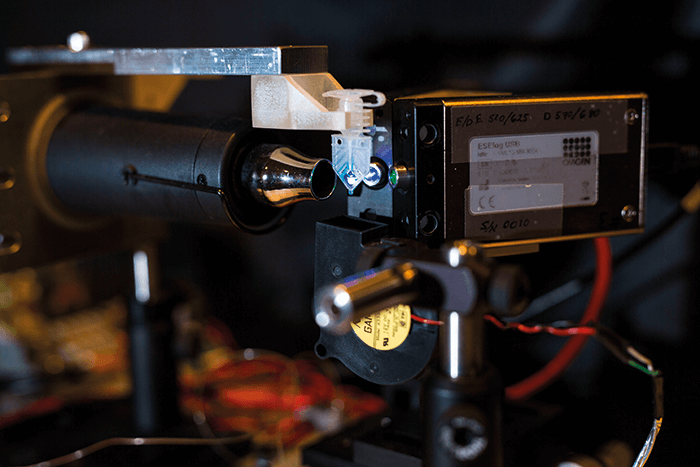DNA, Do You Copy?
Biomedical engineers at Vanderbilt University have designed a new handheld device that uses left-handed DNA (L-DNA) to monitor and control the molecular reactions that take place in the polymerase chain reaction (PCR). The spectrophotometer on the left detects varying levels of fluorescence in the sample (center), illuminated by ultraviolet light, and uses them to control DNA duplication.
The “adaptive PCR” device has the potential to identify bacteria or viruses by DNA signatures before symptoms appear – and its handheld size means it can be transferred easily from the lab to the clinic.

Credit: Anne Rayner, Vanderbilt University
Reference: NM Adams et al., “Adaptive PCR based in hybridization sensing of mirror-image l-DNA”, Anal Chem, 89, 728-735 (2017).




